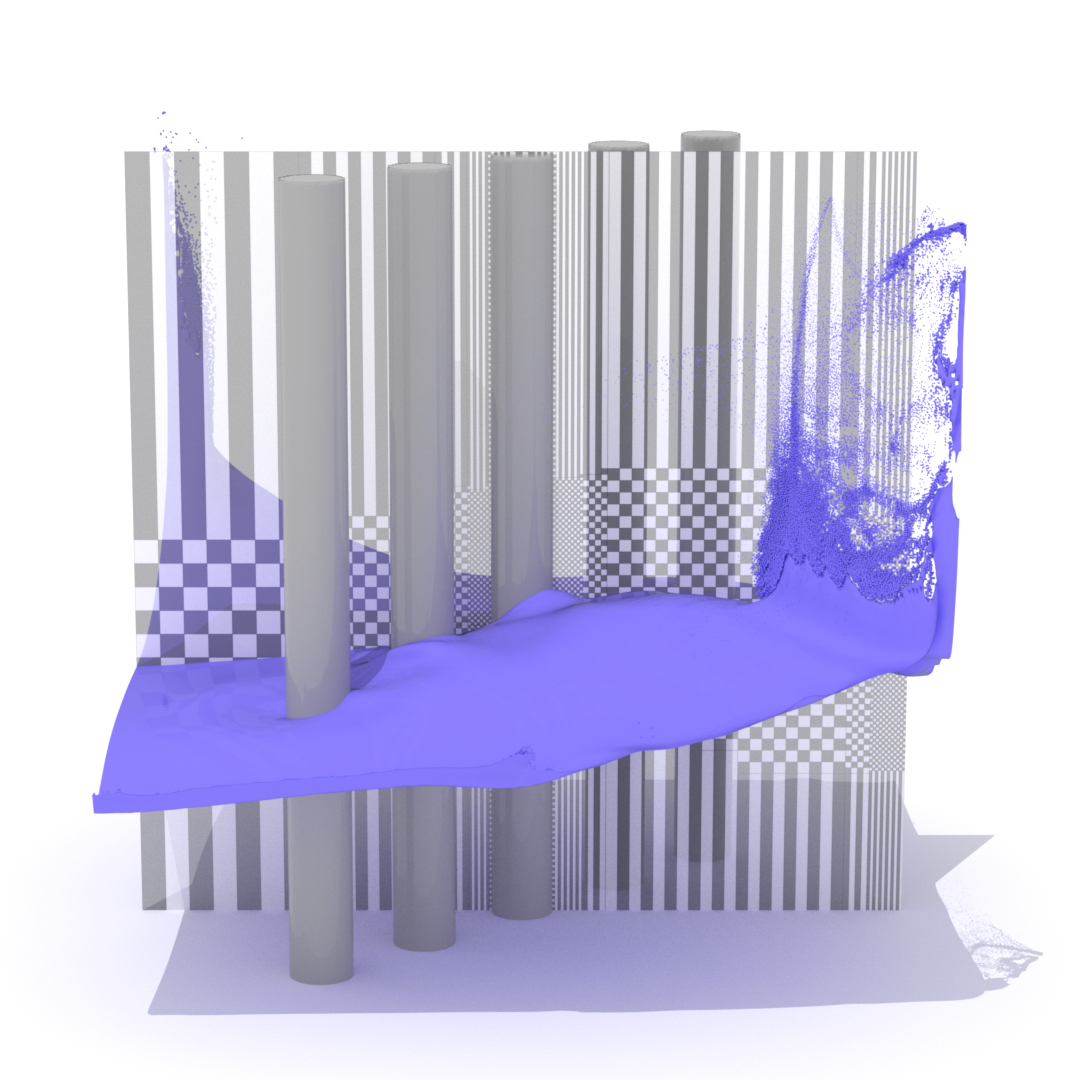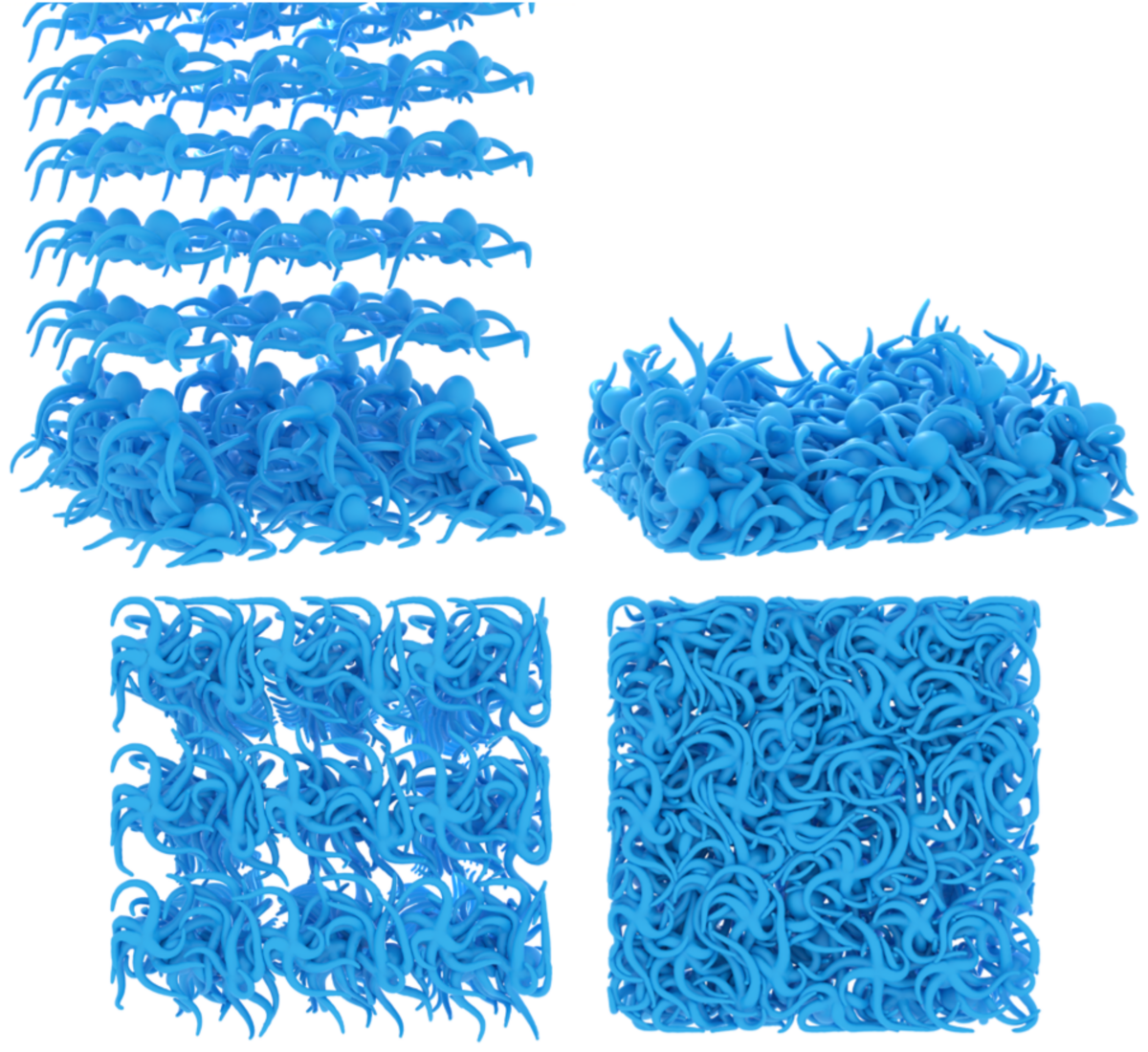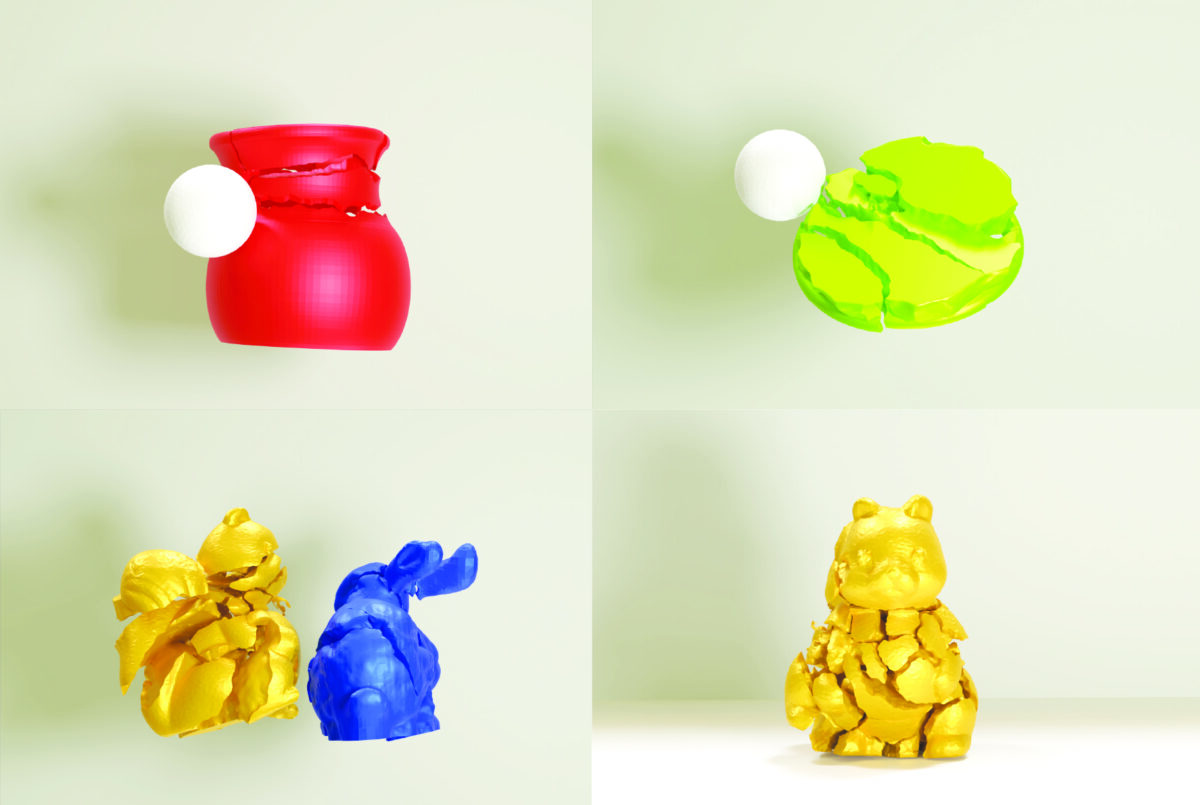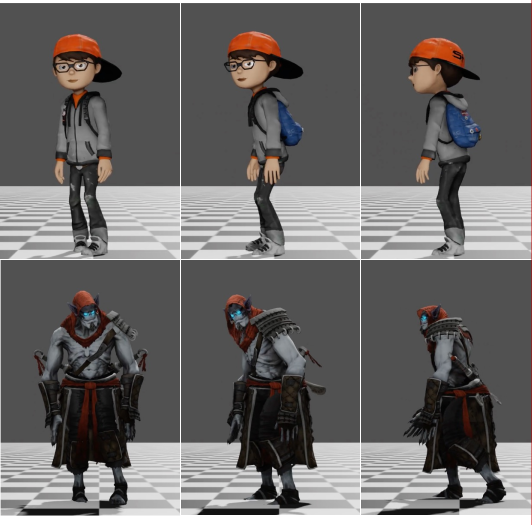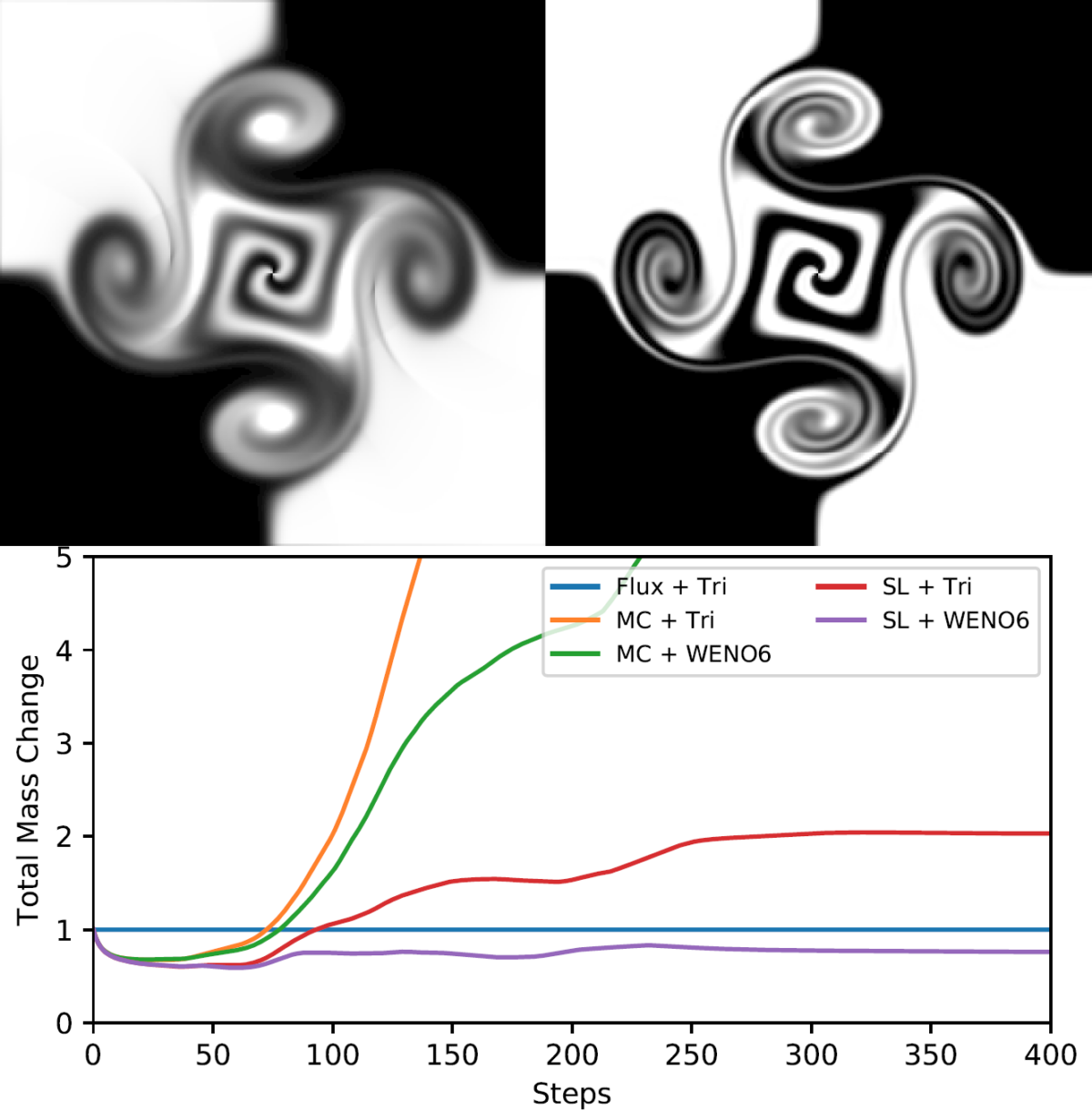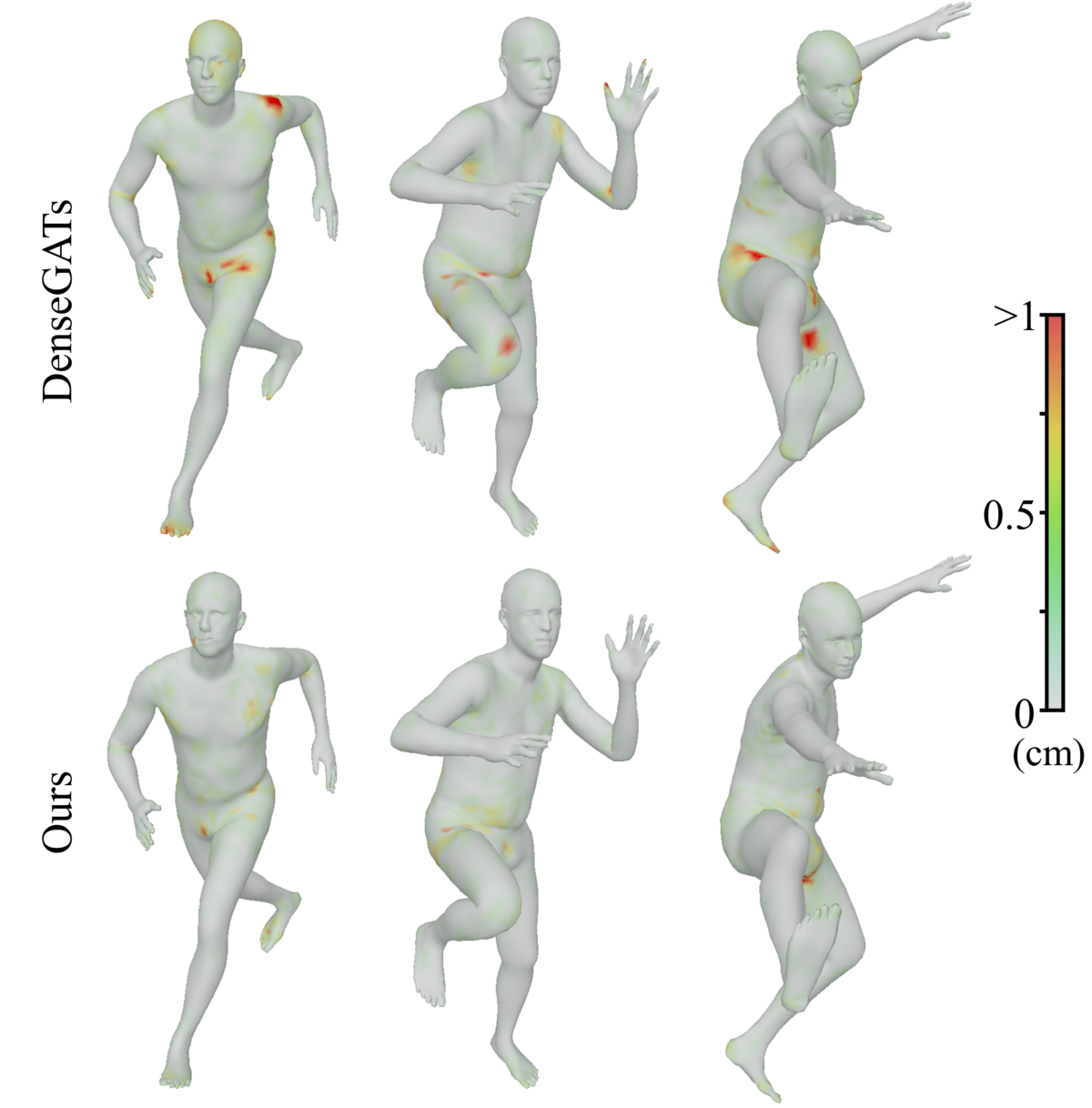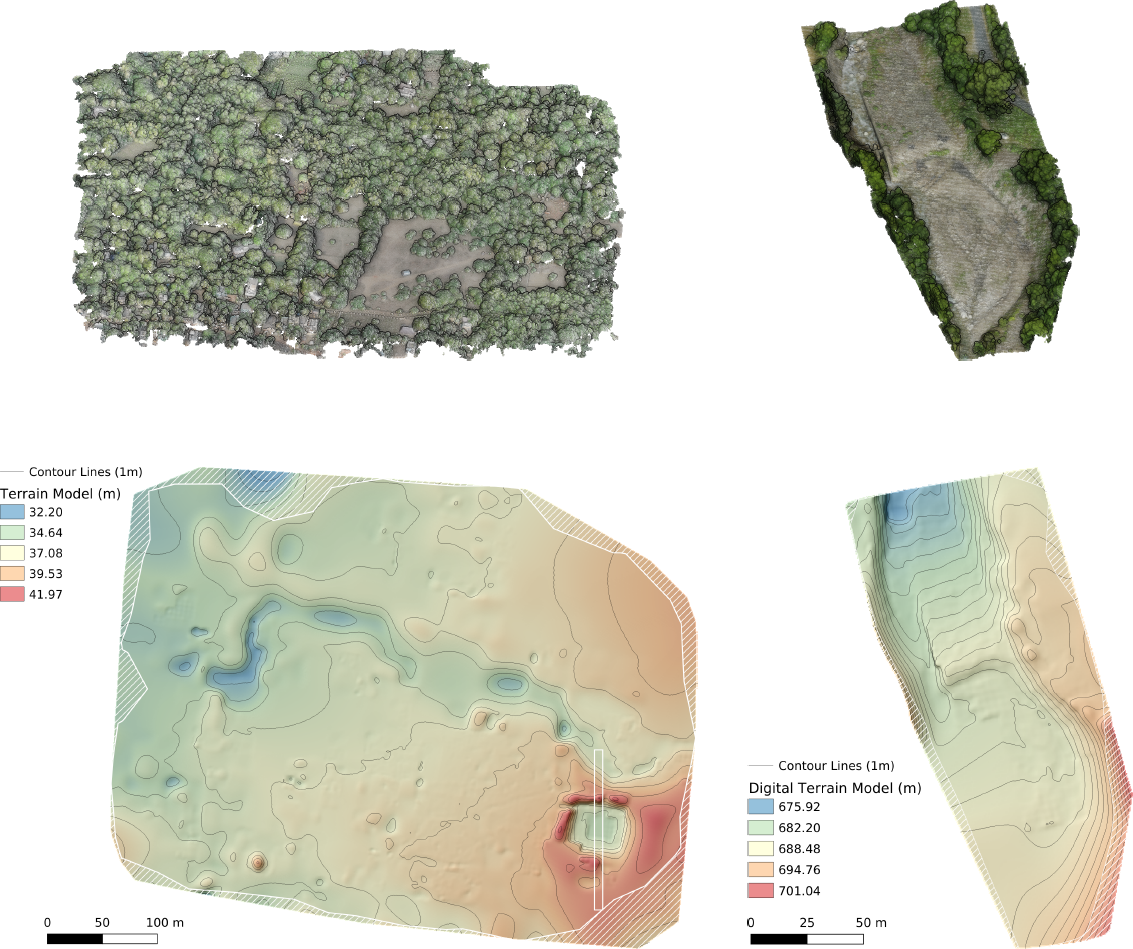This paper introduces a novel grid structure that extends tall cell methods for efficient deep water simulation. Unlike previous tall cell methods, which are designed to capture all the fine details around liquid surfaces, our approach subdivides tall cells horizontally, allowing for more aggressive … Continue reading “Quadtree Tall Cells for Eulerian Liquid Simulation”
Category: Research
A Unified Discrete Collision Framework for Triangle Primitives
We present a unified, primitive-first framework with DCD for collision response in physics-based simulations. Previous methods do not provide sufficient solutions on a framework that resolves edge-triangle and edge-edge collisions when handling self-collisions and inter-object collisions in a unifie … Continue reading “A Unified Discrete Collision Framework for Triangle Primitives”
DeepFracture: A Generative Approach for Predicting Brittle Fractures with Neural Discrete Representation Learning
In the field of brittle fracture animation, generating realistic destruction animations using physics-based simulation methods is computationally expensive. While techniques based on Voronoi diagrams or pre-fractured patterns are effective for real-time applications, they fail to incorporate collisi … Continue reading “DeepFracture: A Generative Approach for Predicting Brittle Fractures with Neural Discrete Representation Learning”
Video-Based Motion Retargeting Framework between Characters with Various Skeleton Structure
We introduce a motion retargeting framework capable of animating characters with distinct skeletal structures using video data. While prior studies have successfully performed motion retargeting be- tween skeletons with different structures, retargeting noisy and unnatural motion data extracted from … Continue reading “Video-Based Motion Retargeting Framework between Characters with Various Skeleton Structure”
Detail-Aware Deep Clothing Animations Infused with Multi-Source Attributes
This paper presents a novel learning-based clothing deformation method to generate rich and reasonable detailed deformations for garments worn by bodies of various shapes in various animations. In contrast to existing learning-based methods, which require numerous trained models for different garmen … Continue reading “Detail-Aware Deep Clothing Animations Infused with Multi-Source Attributes”
GarMatNet: A Learning-based Method for Predicting 3D Garment Mesh with Parameterized Materials
Recent progress in learning-based methods of garment mesh generation is resulting in increased efficiency and maintenance of reality during the generation process. However, none of the previous works so far have focused on variations in material types based on a parameterized material parameter unde … Continue reading “GarMatNet: A Learning-based Method for Predicting 3D Garment Mesh with Parameterized Materials”
Reducing Computational Costs of Small Steps Method in Projective Dynamics
In this paper, we present a strategy to decrease the computational demands of the Small Steps Method in Projective Dynamics, which serves to simulate elastic bodies. The balance between simulation quality and computational effort remains a persistent challenge in computer graphics (CG) for interacti … Continue reading “Reducing Computational Costs of Small Steps Method in Projective Dynamics”
A Flux-Interpolated Advection Scheme for Fluid Simulation
We propose a new advection scheme for fluid simulation that improves both conservation and numerical diffusion. Our work differs from previous works in that we re-formulate interpolation as the cell-face flux of a vector field instantly constructed from a scalar field, rather than a per-point evalua … Continue reading “A Flux-Interpolated Advection Scheme for Fluid Simulation”
MultiResGNet: Approximating Nonlinear Deformation via Multi-Resolution Graphs
This paper presents a graph-learning-based, powerfully generalized method for automatically generating nonlinear deformation for characters with an arbitrary number of vertices. Large-scale character datasets with a significant number of poses are normally required for training to learn such automat … Continue reading “MultiResGNet: Approximating Nonlinear Deformation via Multi-Resolution Graphs”
Digital Terrain Model From UAV Photogrammetric Data
This paper presents a method designed to finely approximate ground surfaces from UAV photogrammetric point clouds by relying on statistical filters to separate vegetation from potential ground points, dividing the whole plot in similar complexity sub-plots through an optimized tilling, and filling h … Continue reading “Digital Terrain Model From UAV Photogrammetric Data”
